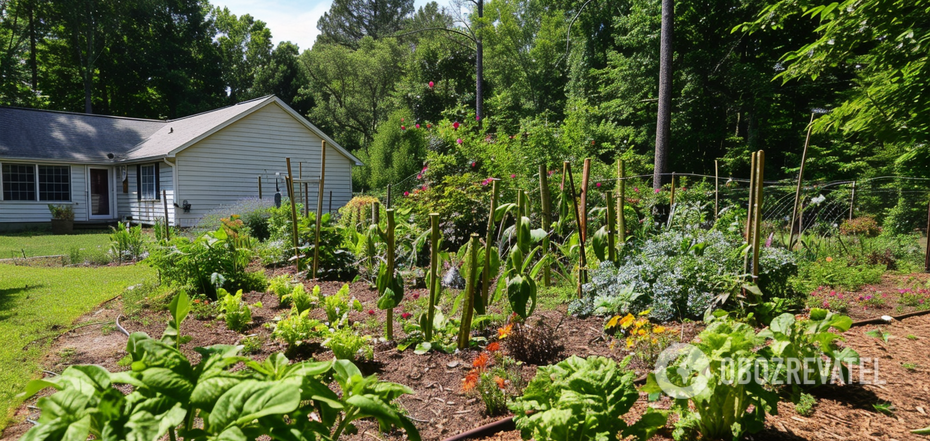Life
What vegetables to plant next to each other to increase their yield: the best neighboring plants
It's not just diseases and pests that plants in the garden can exchange with each other. Some species also attract similar pollinating insects, saturate the soil with mutually beneficial substances, suppress weed growth, and retain the desired moisture level. This way, you can get a bigger harvest from the same bed.
But which crops are best planted next to each other to achieve such results? OBOZ.UA asked gardening experts about the secrets. They shared how to turn your plot not just into a place for growing vegetables, but also into a decorative area where all the plantings work together.
What vegetables are best planted next to each other?
Experienced gardeners advise planting crops that have different heights of green aboveground mass and root lengths. This way, they will not compete for space and sunlight. For example, plants that like partial shade will feel good near tall crops. Burning garlic will be a good protection against pests if you plant it in small patches throughout the site.
This is the neighborhood that will benefit the plants the most:
- carrots – lettuce, radishes, onions, celery, garlic, peas, cucumber, dill, spinach;
- parsley – dill, cabbage, radish, tomatoes;
- cabbage – dill, peas, beets, carrots, peppers, parsley;
- beets – onion, garlic, dill, cucumber, tomato, radish, lettuce, celery;
- celery – spinach, beetroot, peas, beans, cabbage, dill, tomato, onion, carrot, cucumber;
- tomatoes – beets, carrots, legumes, onions, zucchini, spinach, lettuce, radish, garlic, early cabbage, corn, parsley;
- sweet peppers – carrots, onions, dill, cilantro.
- beans – potatoes, pumpkin, corn, cucumber, spinach, celery;
- peas – spinach, celery, radish, turnip, beetroot, zucchini, cabbage, carrot, cucumber, dill;
- onions – lettuce, beets, zucchini, tomato, dill, carrot, cucumber;
- cucumber – beets, spinach, celery, onion, peas, beans, dill, corn, carrots, radish;
- lettuce – onions, beets, asparagus, carrots.
What plants will be bad neighbors?
When planning your crops, be sure to keep in mind that you should not plant plants from the same family next to each other. As a rule, such crops suffer from the same diseases and pests, and one infected bed will result in the neighboring one being affected.
Also, you should not place vegetables with the same need for moisture and nutrients next to each other. They will begin to compete for them and eventually only one of the two or three will win. In addition, this will lead to soil depletion in the garden.
But which neighborhood should you avoid? Here are a few options outside of the rules described above:
- cabbage – will delay the growth, flowering, and ripening of tomatoes;
- beans – mutually inhibit growth with garlic, cabbage, beets, and onions;
- cucumbers – do not get along well with sweet peppers.
What flowers and herbs should be planted in the garden?
Such a neighborhood may surprise those who are used to the fact that the garden is a place for vegetables. However, the right flowers will attract more pollinating insects to the crops. When choosing flowering plants, it is important to remember that they should not grow close to the beds and block the light for vegetables.
The most successful flower for growing in the garden is called marigolds. They drive away pests and attract ladybugs, which destroy aphids. Nasturtium and calendula have similar properties.
It is also worth planting various honey flowers near the garden, which will attract swarms of bees. These can be sweet peas, ornamental sunflowers, cosmea, zinnia, and other annual flowers. Among perennials, you should choose chrysanthemums, echinacea, lavender, monarda, headwort, etc.
Aromatic herbs are another natural pest protector for crops. These include traditional herbs such as dill, basil, and mint. But you can also add sage, thyme, rosemary, and other species with a pronounced aroma.
Subscribe to the OBOZ.UA channels on Telegram and Viber to keep up with the latest events.



























